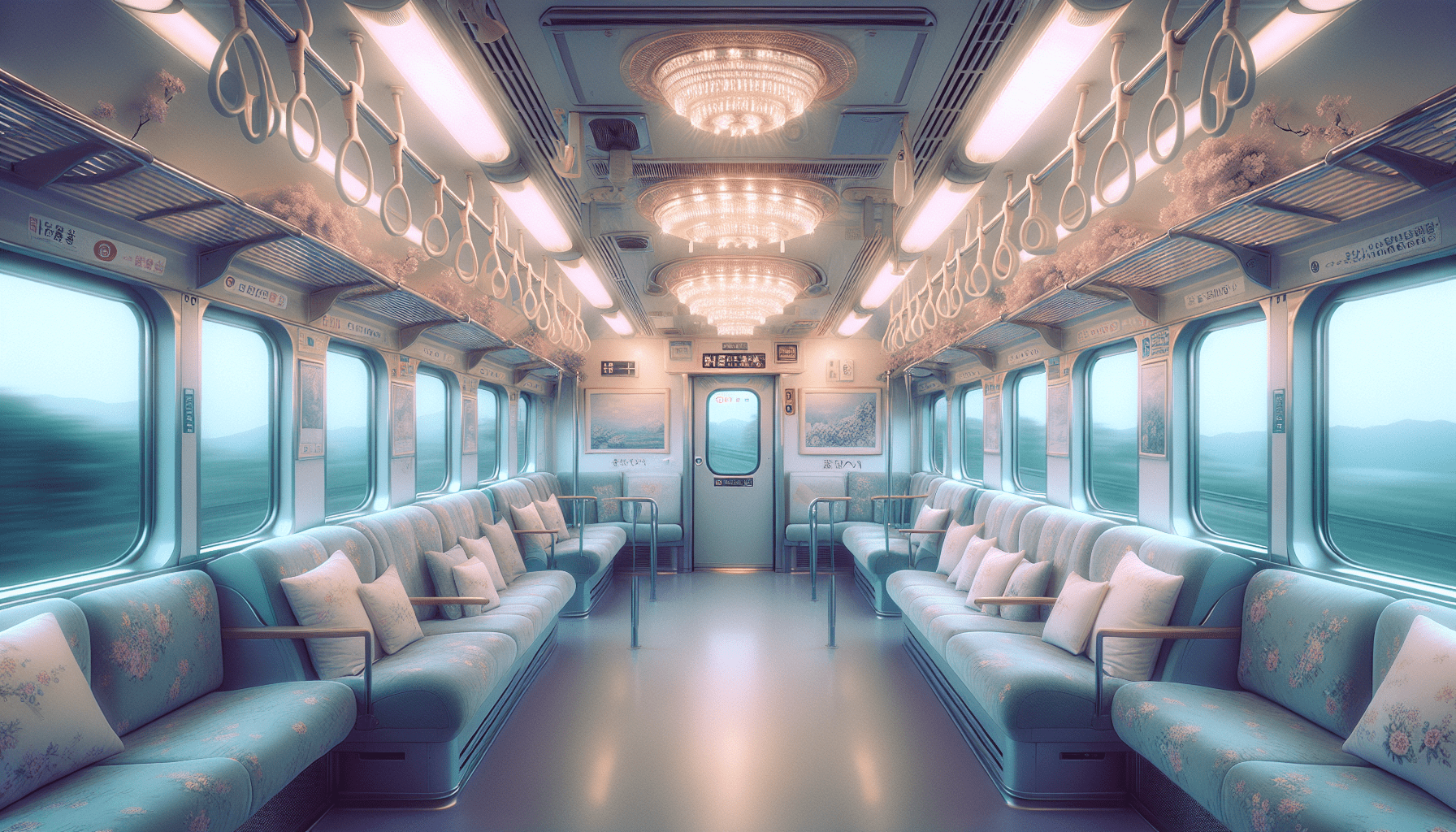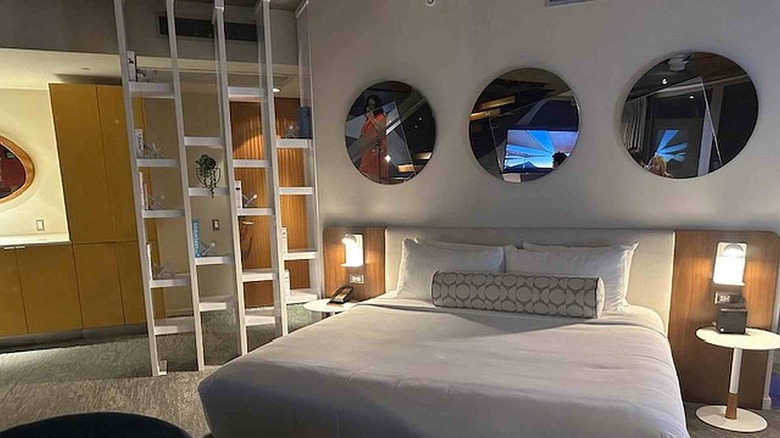travel inspira Luggage Scale, Portable Digital Hanging Baggage Scale for Travel, Suitcase Weight Scale with Rubber Paint, 110 Pounds, Battery Included
$9.99 (as of November 20, 2024 15:23 GMT +00:00 - More infoProduct prices and availability are accurate as of the date/time indicated and are subject to change. Any price and availability information displayed on [relevant Amazon Site(s), as applicable] at the time of purchase will apply to the purchase of this product.)In Japan, women traveling solo can rejoice over the welcomed feature of women-only train cars on the bustling railway network. These special carriages, designed to offer enhanced safety and peace of mind, mitigate the prevalent issue of harassment, known as “chikan.” The women-only cars, identifiable by their pink signage, ensure a secure environment where female travelers can relax and comfortably enjoy their journey, whether commuting through crowded urban areas or venturing across scenic landscapes. As a solo female traveler, you’ll find these train cars a reassuring space, fostering a sense of community and mutual support amidst the hustle and bustle of Japan’s busy trains. Have you ever felt uneasy while traveling alone, especially in crowded places? Navigating through unfamiliar territories as a solo female traveler can often be daunting, but Japan has a feature that aims to make this experience much safer and more comfortable: women-only train cars.

Shop These Accessories for a Comfortable Trip
Japan’s Railway System: An Overview
Japan is world-renowned for its efficient and expansive railway network, which makes traveling across the country a breeze. From the high-speed Shinkansen to local commuter trains, Japan’s railways are integral to daily life and tourism. Around 9 million people use the subway daily in Tokyo alone!
However, amidst the hustle and bustle of crowded trains — which even require people-pushers to help commuters into trains during rush hour — a unique feature has emerged that is especially beneficial for women traveling solo and loving it: women-only train cars.
A Brief History of Women-Only Train Cars
Women-only train cars in Japan are not new; they actually date back over 100 years. They were first introduced in 1912 on Tokyo’s Chuo Line, initially intended for schoolgirls during rush hour. The city of Kobe also introduced women-only trams in the 1920s and 1930s. Post World War II, women and children had special reserved cars, but these were later replaced in 1973 with priority seating for vulnerable groups like the elderly or people with disabilities.
The Resurgence in the 2000s
The current system of women-only cars emerged in 2000 due to rising cases of sexual harassment, known as “chikan” (ちかん), or acts of public molestation. According to Japan Experience, a Tokyo Metropolitan Police survey in the early 2000s showed that ⅔ of women aged 20 to 40 reported being victims of chikan at some point on a crowded train. Unfortunately, these incidents were becoming a significant issue, leading to a public outcry for safer commuting options.
Modern Implementation
Today, most metropolitan train lines in Japan offer women-only cars during peak hours to ensure safer travel for women. This feature has been welcomed warmly by many, particularly solo female travelers.

Shop These Accessories for a Comfortable Trip
Benefits for Solo Female Travelers
An Enhanced Sense of Safety and Security
The primary advantage of women-only train cars is, without a doubt, an enhanced sense of safety and security. As solo women, you can ride without the constant concern of harassment. In Osaka, for example, regular trains at peak times are filled to 160% capacity, leading to the worst cases of harassment against women. Once female-only train cars were implemented, complaints against chikan decreased by a third in just one year.
Crowded public trains are the ideal environment for chikan perpetrators as they can commit their crimes relatively undetected. Since there’s no personal space, it’s hard to discern who the abuser is, and even worse, it’s challenging for the victim to speak out when it’s happening on a packed train. Only 10% of women report the crime (via BBC).
Knowing there is a designated space for women provides peace of mind, particularly important for women traveling late at night — when intoxicated and uninhibited people return after partying — or early in the morning when there might be fewer passengers on board.
Less Crowded and More Comfortable
Women-only cars tend to be less crowded than regular cars during peak hours, and passengers can find seats more easily. Moreover, sharing a space with other women can help foster a sense of community and mutual support. For solo female travelers, it can be comforting to be surrounded by other women, especially in a foreign country. A survey found that nearly 70% of women in Tokyo support women-only train cars (via The Japan Times).
Practical Tips for Using Women-Only Cars
Availability and Recognition
Not all trains have women-only cars, and availability varies depending on the time of day and train line. Currently, women-only train cars exist on 87 lines of 32 railway companies.
| Type of Information | Details |
|---|---|
| Number of Lines | 87 |
| Companies | 32 |
Check the signage to ensure you board the right one, usually marked in pink with “women only.” Floor signage also indicates boarding areas for women-only trains.
Who Can Enter?
Some of these trains also permit the entry of young children, people with disabilities, and caregivers, no matter their gender, if they are accompanied by women. Remember to adhere to designated times when women-only cars are in operation, typically between 6 a.m. to 9 a.m. and 5 p.m. to 9 p.m. Some may be open to all passengers (including men) outside those hours, while others operate as women-only 24/7.
Etiquette and Considerations
Although the cars are designated for women, it’s still important to be considerate of fellow passengers — keep noise to a minimum and respect personal space. Take advantage of the comfort and security these special cars provide to relax and enjoy your journey. Read, plan your trip, or simply observe the scenic landscapes of Japan.
Legal Consequences for Chikan
Chikan is illegal, and anyone found guilty faces imprisonment or a ¥500,000 ($4,500) fine. There are signs in Japanese train stations to remind passengers that this is a crime punishable by law. If you see someone being harassed, or if you are a victim yourself, contact the police (dial 110) and the railway company. But most importantly, do not be afraid to shout “chikan!”
Final Thoughts
Solo travel can be an incredibly rewarding and enriching experience, but it’s not without its challenges, especially when it comes to personal safety. The introduction of women-only train cars in Japan serves as a testament to how thoughtful planning and public demand can make a significant difference in creating safer spaces for everyone. Whether you’re a local or a tourist, these special cars can provide the peace of mind you need to explore and enjoy your journey to the fullest. So the next time you’re in Japan, don’t hesitate to use these women-only train cars. They are there to make your travels as comfortable and secure as possible.
Shop These Accessories for a Comfortable Trip






